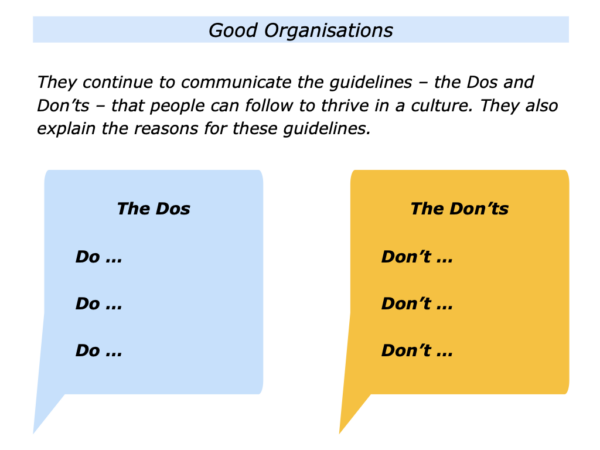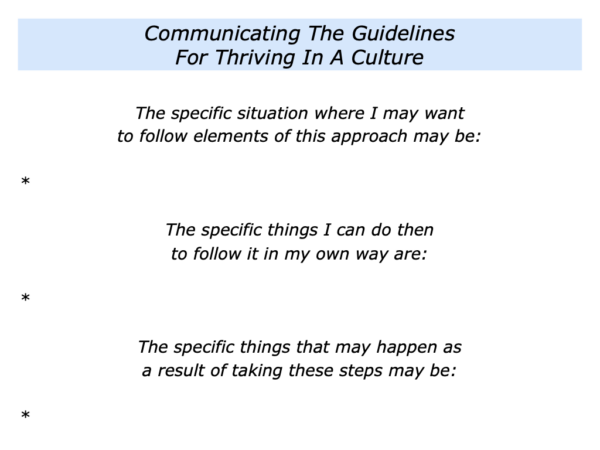
Good organisations communicate the guidelines – the Dos and Don’ts – that people can follow to thrive in a culture. They also explain the reasons for these guidelines.
Every system has rules. The system may be a family, work place or other culture. Sometimes these rules are spoken and made tangible. Sometimes they are not spoken and are less tangible.
People like clarity. They like to know the rules about how to behave in a certain system. They can then decide if they want to follow these in their own way.
Some systems have rules that are encouraging. They help people to develop and do their best. Some systems have rules that can be repressive or confusing.
Good cultures take the first approach. They continually explain the Dos and Don’ts for doing good work. For example:
Do have a positive attitude … Do take responsibility … Do be proactive.
Do make clear contracts about your contribution towards achieving the organisation’s goals … Do deliver the goods … Do help the organisation, your customers and your colleagues to achieve success.
Do take care of your health … Do encourage other people … Do keep developing as a person and as a professional.
(The Don’ts may be the opposite of some of the Dos.)
Some cultures have rules that may not be so healthy. They implicitly give people the following messages:
Do compete against each other … Do flatter your boss … Do remember that you are only here to make money for the organisation.
Good leaders continue to explain the guidelines that people can follow to thrive in a culture. As mentioned earlier, they also describe the reasons for following the guidelines.
Different leaders do this in different situations. They may do it when running a workshop, leading a team or shaping the culture in a company. They realise it is also important to keep communicating these guidelines.
Let’s return to your own life and work. Looking ahead, can you think of a situation where you may want to follow elements of this approach? How can you do this in your own way?
If you wish, try tackling the exercise on this theme. This invites you to complete the following sentences.







Leave a Reply